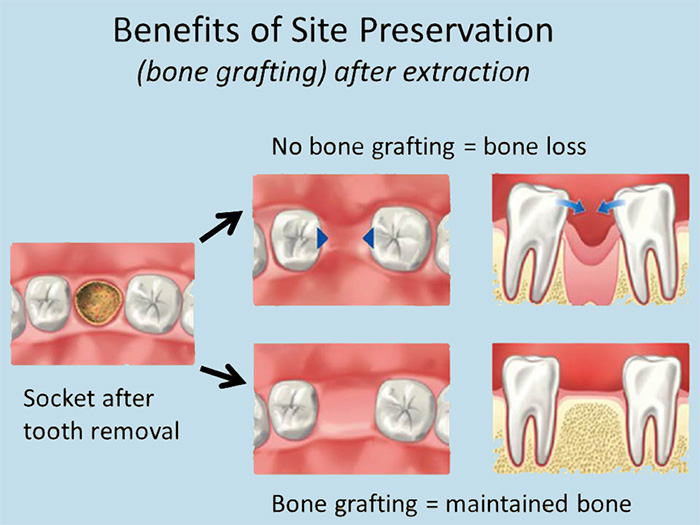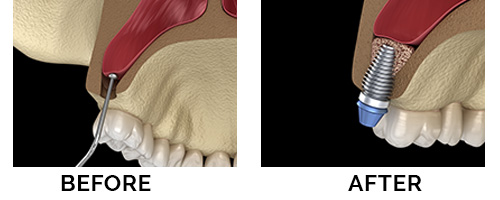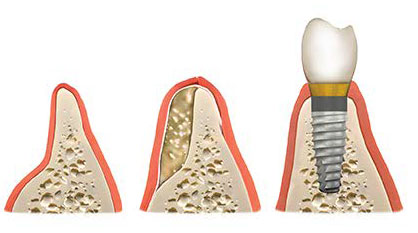
Bone Grafting
Bone Grafting
Periodontal disease is the primary cause of bone loss in the oral cavity. Various bone grafting procedures can be used to replace lost bone tissue and promote natural bone growth.
A bone graft can help create a stable base for dental implant placement, to stop the progression of gum disease, or to improve the aesthetics of a smile.
The following are the three most common bone grafts:
- Autogenous bone graft – Bone is removed from elsewhere in the patient’s own body and implanted in the mouth. Common donor sites include the iliac section of the pelvis, the chin and the posterior third molar areas of the jaw. If the bone graft requires a large amount of bone, then the hip or the shin bone can be used.
- Allograft – Synthetic, or man-made, bone can be created in the laboratory and used for a bone grafting procedure. There are also bone banks that can supply cadaver bones for a bone graft.
- Xenograft – This involves using bone from cows. A xenograft is a time-tested procedure that has been used successfully for years.
What are some reasons for bone grafting?
1. Around existing teeth (known as Guided Tissue Regeneration, GTR) – If you have severe gum disease known as periodontitis, you may have lost some of the bone that holds your teeth in place. Left untreated, the destruction continues until the teeth become loose from lack of support and eventually fall out. There are various bone grafting options available to regenerate loss bone, such as bone replacement graft materials, barrier membranes, and growth factors.

2. Dental implants – Implants need to be firmly anchored to the jawbone to be effective; hence, bone structure is important for the success of a dental implant. If the jawbone lacks the necessary bone, then bone grafting can strengthen the implant site and improve the prospects of a dental implant.
3. Following an extraction – A bone graft can be used to prevent bone loss following a tooth extraction. These "socket grafts" involve the placement of bone-graft material into an empty socket left behind by an extracted tooth.

4. Sinus lift – The posterior jawbone may not have adequate bone height below the sinus to place an implant. A sinus lift involves raising the sinus membrane and grafting bone onto the sinus so that a dental implant can be securely placed.

5. Ridge augmentation – Ridge defects in the bone can be caused by trauma, birth defects, or gum disease. Bone grafting can be used to fill in the ridge and give the jawbone more volume to provide support for implant and improve esthetics.

What does bone grafting treatment involve?
The grafting material needs to either be harvested from the patient or other aforementioned sources. A small incision is made in the gum tissue and the gum tissue is gently separated from the bone. The bone grafting material is then placed.
What can supplement bone regeneration?
- Gum/bone tissue regeneration – A thin barrier/membrane is placed below the gum line over the grafting material. This barrier creates enough space for healthy tissue to grow, which can cause bone cells to migrate to the protected area and grow naturally.
- Tissue stimulating proteins – Enamel matrix proteins occur during natural tooth development. Emdogain is a matrix protein product which can be placed on the operative site before the gum is sutured. Tissue stimulating proteins help to create support in affected areas.
- Platelet rich plasma – A high platelet concentration liquid can be used to stimulate bone growth, which can cause a denser graft in a quicker time period.
The gum is sutured in place and a follow up appointment is made to assess progress.
Call our office today at 818-584-1841 for a consultation to review enhancing your smile and your oral health.
